-
 Bitcoin
Bitcoin $109,459.7682
2.44% -
 Ethereum
Ethereum $2,598.6052
6.29% -
 Tether USDt
Tether USDt $1.0003
0.00% -
 XRP
XRP $2.2734
3.95% -
 BNB
BNB $661.4886
1.58% -
 Solana
Solana $155.4825
4.35% -
 USDC
USDC $0.9999
-0.02% -
 TRON
TRON $0.2838
1.04% -
 Dogecoin
Dogecoin $0.1740
8.25% -
 Cardano
Cardano $0.6047
9.04% -
 Hyperliquid
Hyperliquid $40.2302
6.50% -
 Sui
Sui $2.9863
10.05% -
 Bitcoin Cash
Bitcoin Cash $509.5786
0.60% -
 Chainlink
Chainlink $13.8156
6.03% -
 UNUS SED LEO
UNUS SED LEO $9.0142
0.69% -
 Avalanche
Avalanche $19.0337
8.68% -
 Stellar
Stellar $0.2438
5.17% -
 Toncoin
Toncoin $2.9012
3.59% -
 Shiba Inu
Shiba Inu $0.0...01210
6.20% -
 Litecoin
Litecoin $90.0882
7.05% -
 Hedera
Hedera $0.1597
8.53% -
 Monero
Monero $326.3340
2.88% -
 Polkadot
Polkadot $3.6365
9.32% -
 Bitget Token
Bitget Token $4.6162
2.72% -
 Dai
Dai $1.0001
0.00% -
 Ethena USDe
Ethena USDe $1.0002
-0.01% -
 Uniswap
Uniswap $7.6403
10.47% -
 Pepe
Pepe $0.0...01060
12.03% -
 Aave
Aave $281.3664
7.56% -
 Pi
Pi $0.4992
1.76%
What is an nft whitelist?
NFT whitelists grant select wallets early access to mint tokens at lower costs, fostering community engagement and fair distribution.
Jul 02, 2025 at 11:14 am
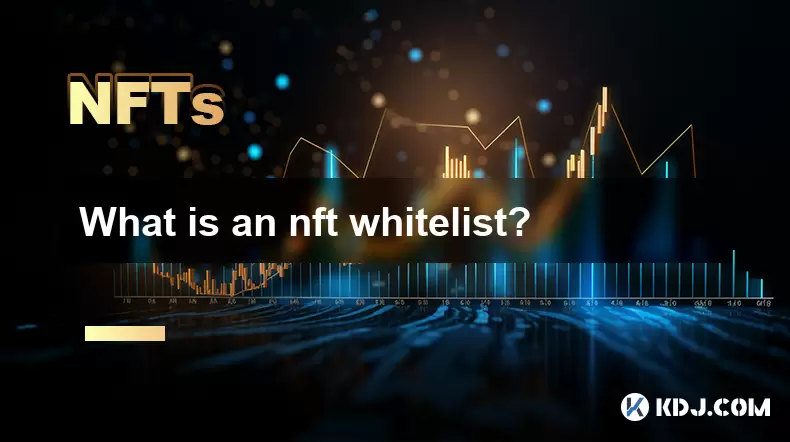
Understanding the Concept of an NFT Whitelist
In the world of non-fungible tokens (NFTs), a whitelist refers to a list of approved wallet addresses that are granted exclusive access to mint or purchase specific NFTs before they become available to the general public. This mechanism is commonly used during NFT presales or private sales, where project creators want to reward early supporters, community members, or select individuals with priority access.
Being on an NFT whitelist typically means you can mint NFTs at a lower cost, bypassing gas wars and high competition during the official public sale. It also ensures that genuine collectors and not bots or speculators dominate the initial distribution phase.
Whitelisting is a strategic move by NFT projects to build loyalty and engagement within their communities.
How Does an NFT Whitelist Work?
The process of getting whitelisted varies from one project to another, but the core idea remains consistent: only selected wallets can participate in the presale. Here’s how it generally works:
- Project teams often run social media campaigns, giveaways, or engagement challenges on platforms like Twitter, Discord, and Telegram.
- Interested participants must complete certain tasks such as joining the Discord server, retweeting a post, tagging friends, or creating content related to the project.
- After verifying the participation, the team selects eligible users and adds their Ethereum (or other blockchain) wallet addresses to the whitelist.
- During the presale period, only those listed can connect their wallets and mint the NFTs at the predetermined price.
Once the whitelist minting window closes, the remaining NFTs go on sale to the public, often at a higher price and with increased competition.
Why Do Projects Use NFT Whitelists?
There are several reasons why NFT projects implement whitelisting as part of their launch strategy:
- Community Building: By offering whitelist spots, projects encourage active participation and help cultivate a dedicated fanbase.
- Avoiding Bot Attacks: Public mints often attract bot operators who try to mint large quantities for resale. Whitelisting mitigates this issue by limiting access to verified human participants.
- Fair Distribution: Whitelists ensure that real collectors and enthusiasts get a chance to acquire NFTs before resellers or marketplaces take over.
- Marketing Strategy: A well-run whitelist campaign generates buzz and anticipation around a project, increasing visibility across social platforms.
Whitelists serve as both a filtering mechanism and a promotional tool for emerging NFT projects.
Steps to Get Whitelisted for an NFT Project
If you're interested in securing a spot on an NFT whitelist, here’s what you need to do:
- Follow Official Channels: Join the project’s Discord, Twitter, and Telegram groups to stay updated on whitelist announcements.
- Complete Tasks: Many projects require participants to perform actions like sharing posts, tagging others, or creating art related to the project.
- Submit Your Wallet Address: Some projects ask for your wallet address via Google forms or direct messages to be added to the whitelist.
- Avoid Scams: Never share your private keys or seed phrases. Only interact with verified administrators and official links.
Always verify the authenticity of the project before submitting any personal information or wallet details.
Differences Between Whitelist Minting and Public Sale
There are key distinctions between minting during the whitelist phase and participating in the public sale:
- Price: Whitelist mints usually come with a discounted minting fee compared to the public sale price.
- Timing: Whitelist mints occur earlier than public mints, giving early access to limited editions or rare traits.
- Access Control: Only whitelisted wallets can mint during this phase, while the public sale is open to everyone.
- Competition Level: Public sales often lead to high gas fees and network congestion due to simultaneous minting attempts.
Whitelist minting offers a more secure, affordable, and efficient way to acquire NFTs compared to competing in a public sale.
Frequently Asked Questions
Q1: Can I apply for multiple whitelist spots using different wallets?
While some projects allow multiple entries per person, others explicitly prohibit it. Always read the rules carefully, as violating them may result in disqualification.
Q2: What happens if my wallet is not on the whitelist during the presale?
You won’t be able to mint during the whitelist phase. However, you can still participate in the public sale, although it may involve higher costs and more competition.
Q3: Is there a way to check if my wallet has been whitelisted?
Most projects provide tools on their official websites or Discord channels where you can input your wallet address to verify its inclusion.
Q4: Are all NFT projects required to have a whitelist?
No, not all NFT projects use whitelists. Some opt for public mints only, while others may include a combination of giveaways, raffles, and whitelist phases.
Disclaimer:info@kdj.com
The information provided is not trading advice. kdj.com does not assume any responsibility for any investments made based on the information provided in this article. Cryptocurrencies are highly volatile and it is highly recommended that you invest with caution after thorough research!
If you believe that the content used on this website infringes your copyright, please contact us immediately (info@kdj.com) and we will delete it promptly.
- Coinbase's Crypto Conquest: The Liquifi Acquisition and the Token Revolution
- 2025-07-03 16:30:12
- Neo Pepe Coin: Can This Meme Coin Make Waves in the 2025 Crypto Market?
- 2025-07-03 16:50:12
- Toncoin, Dogecoin, and Shiba Inu: A Wild Ride in the Crypto Zoo
- 2025-07-03 16:30:12
- AllScale: Stablecoin Solutions Empowering Small Businesses – A New York Perspective
- 2025-07-03 16:35:12
- Neo Pepe Coin Presale: Is This Meme Coin a Serious Crypto Investment?
- 2025-07-03 17:10:11
- Memecoins to Buy in July 2025: Riding the Hype or Investing Wisely?
- 2025-07-03 17:10:11
Related knowledge
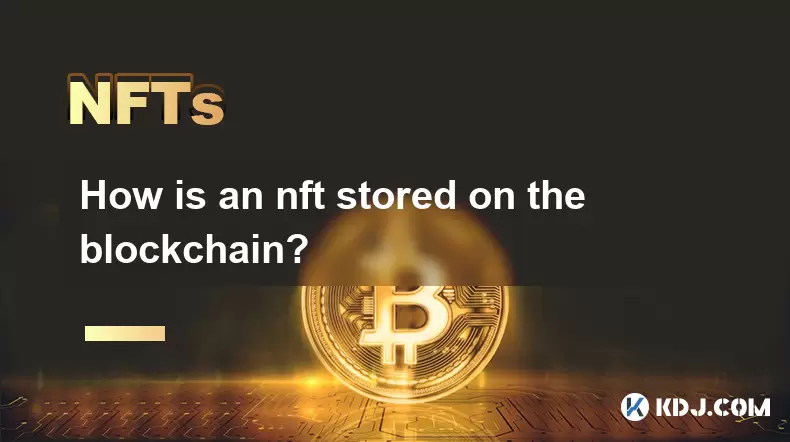
How is an nft stored on the blockchain?
Jul 01,2025 at 04:07am
How Is an NFT Stored on the Blockchain?Non-Fungible Tokens (NFTs) have revolutionized how digital assets are owned, verified, and transferred. Understanding how an NFT is stored on the blockchain provides clarity on its uniqueness, immutability, and traceability. Understanding the Basic Structure of an NFTAn NFT is a unique token that represents ownersh...
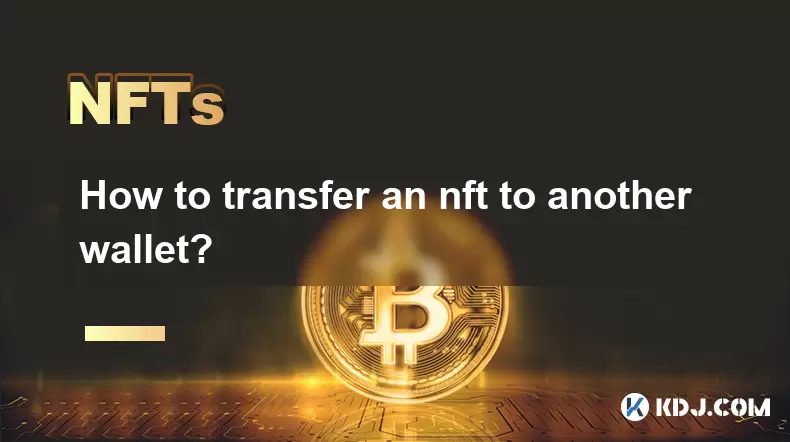
How to transfer an nft to another wallet?
Jul 01,2025 at 10:21am
Understanding the Basics of NFT TransfersTransferring an NFT (Non-Fungible Token) from one wallet to another is a common operation in the blockchain space. Before proceeding, it's crucial to understand what an NFT represents: a unique digital asset stored on a blockchain, typically Ethereum or other compatible chains like Binance Smart Chain or Solana. ...
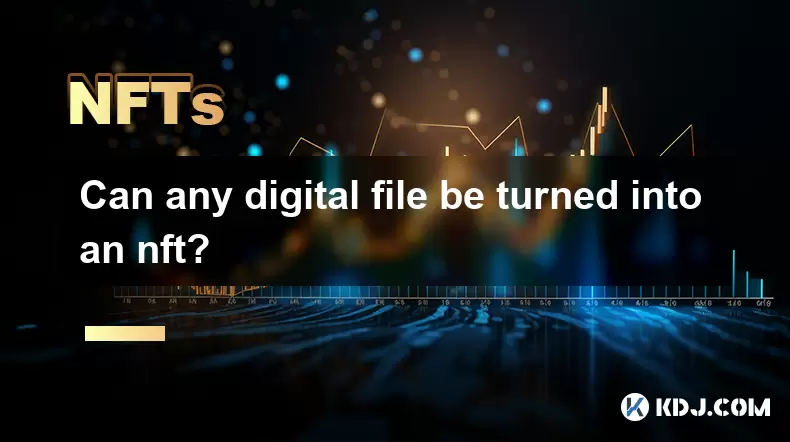
Can any digital file be turned into an nft?
Jul 01,2025 at 07:00am
Understanding the Concept of NFTsAn NFT (Non-Fungible Token) is a unique digital certificate of ownership stored on the blockchain. Unlike cryptocurrencies such as Bitcoin or Ethereum, which are fungible and interchangeable, NFTs represent one-of-a-kind assets that cannot be replicated or replaced. These tokens can represent various types of digital fil...

What are the best nft analytics tools?
Jul 02,2025 at 03:49am
Understanding the Role of NFT Analytics ToolsIn the fast-evolving world of non-fungible tokens (NFTs), data-driven decisions are crucial for creators, investors, and collectors. NFT analytics tools serve as a bridge between raw blockchain data and actionable insights. These platforms aggregate information from various blockchains to offer detailed metri...

How to analyze an nft project's roadmap?
Jul 01,2025 at 12:01pm
What is an NFT Project Roadmap?An NFT project roadmap serves as a strategic plan outlining the development goals, milestones, and timelines for a non-fungible token initiative. It typically includes short-term and long-term objectives, key deliverables, team updates, partnerships, and community engagement strategies. A well-structured roadmap helps inve...
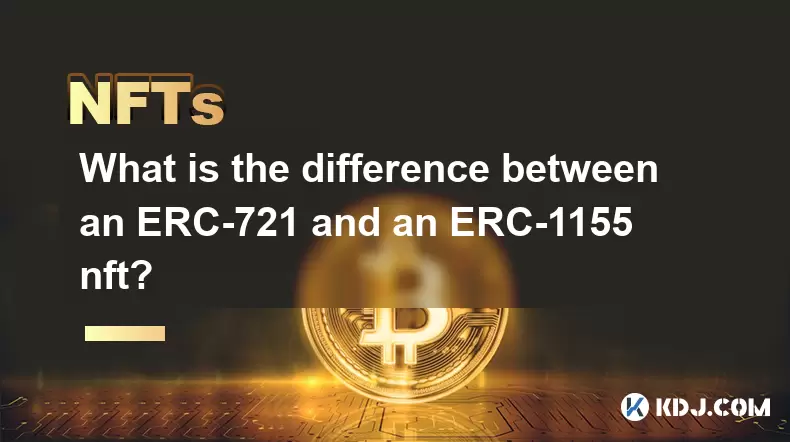
What is the difference between an ERC-721 and an ERC-1155 nft?
Jul 02,2025 at 08:28am
Understanding the Basics of NFT StandardsTo fully grasp the difference between ERC-721 and ERC-1155, it’s essential to understand what an NFT standard is. In the Ethereum ecosystem, standards like ERC-721 and ERC-1155 define how non-fungible tokens (NFTs) are created, managed, and transferred. These standards ensure interoperability across platforms, wa...

How is an nft stored on the blockchain?
Jul 01,2025 at 04:07am
How Is an NFT Stored on the Blockchain?Non-Fungible Tokens (NFTs) have revolutionized how digital assets are owned, verified, and transferred. Understanding how an NFT is stored on the blockchain provides clarity on its uniqueness, immutability, and traceability. Understanding the Basic Structure of an NFTAn NFT is a unique token that represents ownersh...

How to transfer an nft to another wallet?
Jul 01,2025 at 10:21am
Understanding the Basics of NFT TransfersTransferring an NFT (Non-Fungible Token) from one wallet to another is a common operation in the blockchain space. Before proceeding, it's crucial to understand what an NFT represents: a unique digital asset stored on a blockchain, typically Ethereum or other compatible chains like Binance Smart Chain or Solana. ...

Can any digital file be turned into an nft?
Jul 01,2025 at 07:00am
Understanding the Concept of NFTsAn NFT (Non-Fungible Token) is a unique digital certificate of ownership stored on the blockchain. Unlike cryptocurrencies such as Bitcoin or Ethereum, which are fungible and interchangeable, NFTs represent one-of-a-kind assets that cannot be replicated or replaced. These tokens can represent various types of digital fil...

What are the best nft analytics tools?
Jul 02,2025 at 03:49am
Understanding the Role of NFT Analytics ToolsIn the fast-evolving world of non-fungible tokens (NFTs), data-driven decisions are crucial for creators, investors, and collectors. NFT analytics tools serve as a bridge between raw blockchain data and actionable insights. These platforms aggregate information from various blockchains to offer detailed metri...

How to analyze an nft project's roadmap?
Jul 01,2025 at 12:01pm
What is an NFT Project Roadmap?An NFT project roadmap serves as a strategic plan outlining the development goals, milestones, and timelines for a non-fungible token initiative. It typically includes short-term and long-term objectives, key deliverables, team updates, partnerships, and community engagement strategies. A well-structured roadmap helps inve...

What is the difference between an ERC-721 and an ERC-1155 nft?
Jul 02,2025 at 08:28am
Understanding the Basics of NFT StandardsTo fully grasp the difference between ERC-721 and ERC-1155, it’s essential to understand what an NFT standard is. In the Ethereum ecosystem, standards like ERC-721 and ERC-1155 define how non-fungible tokens (NFTs) are created, managed, and transferred. These standards ensure interoperability across platforms, wa...
See all articles

























































































